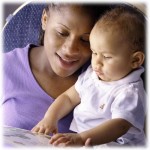Contributed by Paul Henrickson, Chaplain, Roanoke College; Salem, VA
Warm-up Question
Was 2010 a happy year for you? Why? What do you think makes for happiness?
Happy New Year
 Happy New Year! (With great emphasis on HAPPY!) It’s time to make those New Year’s resolutions – you know those promises you make to yourself and then wiggle out of them by Valentine’s Day. Let’s see, what will make me “happy” in 2011? In 2011 I am going to lose 20 pounds; I am going to quit smoking; I am going to take more time for my family; I am going to read one good book each month … We make New Year’s Resolutions because we imagine that we can live happier in the future than we did in the past. If I ask my students what they want in their life, they always say “I want to be happy.” After all, we have it written in the Declaration of Independence that we have the right to the “… pursuit of happiness.” So let’s all resolve to be happy in 2011.
Happy New Year! (With great emphasis on HAPPY!) It’s time to make those New Year’s resolutions – you know those promises you make to yourself and then wiggle out of them by Valentine’s Day. Let’s see, what will make me “happy” in 2011? In 2011 I am going to lose 20 pounds; I am going to quit smoking; I am going to take more time for my family; I am going to read one good book each month … We make New Year’s Resolutions because we imagine that we can live happier in the future than we did in the past. If I ask my students what they want in their life, they always say “I want to be happy.” After all, we have it written in the Declaration of Independence that we have the right to the “… pursuit of happiness.” So let’s all resolve to be happy in 2011.
Daniel Gilbert is a Psychology professor at Harvard – he studies “happiness.” In 2003 he wrote an article for the New York Times entitled “The Futile Pursuit of Happiness.” In this article he argues that we can’t “pursue” happiness because we really don’t know what will make us happy. He emphasizes that there is a gap between what we predict will make us happy and what we ultimately experience. Gilbert calls this gap the “impact bias.” He says that we consistently over estimate what will make us happy; i.e. planning for a vacation anticipates more happiness than actually going on the vacation. Gilbert writes that impact bias “…characterizes how we experience the dimming excitement over not just a BMW but also over any object or event that we presume will make us happy.”
So… “Happy New Year!” (with Happy being an elusive goal.)
Discussion Questions
- What are your resolutions for 2011?
- If “happiness” is your goal, what kind of grade do you give your life so far?
- Why do you think we experience “impact bias,” the gap between what we think will make us happy and what we actually experience? What might we do to lessen the gap?
Scripture Texts (NRSV) for Sunday, January 2, 2011 (Second Sunday of Christmas)
(Text links are to Oremus Bible Browser. Oremus Bible Browser is not affiliated with or supported by the Evangelical Lutheran Church in America. You can find the calendar of readings for Year C at Lectionary Readings.)
For lectionary humor and insight, check the weekly comic Agnus Day.
Gospel Reflection
If I ever have the opportunity to teach conformation class again, I will require the students to memorize John 1:1-18; this is the pure Gospel. It is, in a sense, our own “Declaration of Independence” from the bondage of sin and it is the foundation for the life of a Christian. Listen to these phrases:
- In the beginning was the Word
- the Word became flesh
- the light shines in the darkness
- power to become the children of God
- we have all received grace upon grace
This is the Gospel of the Lord.
This is not about being happy; it is about joy. It is about having the abundant life that comes, not because of our clever planning, but as a gift from God. We are required to do nothing but accept the gift and make it the foundation of our lives of faith.
Resolve to live your life in the gift of grace.
Resolve to repeat these 18 verses once a day.
Resolve to surrender, not to pleasure, but to joy.
Discussion Questions
- What is the difference between happiness and joy? Is it possible to be joyful without being happy?
- John 1:1-18 is one of the great passages of scripture. If you could only share one other text from the Bible with another person, what would it be?
Activity Suggestions
- John’s prologue emphasizes that God’s love is not merely an abstraction, but has become touchable in a person. Share a time when the love of God became more than a theological term because you experienced it in a person.
- Draw a picture to illustrate, ‘the light shines in the darkness and the darkness has not overcome it.”
- Read John 1:1-18 each day for a week and keep a journal of your thoughts in response to the words. Share your insights the next time your group meets?
Closing Prayer
Lord of all Joy, by your grace let me surrender to the joy you have given me. Let me live this day in the light of the Word, made flesh, and evident to me. Amen

 This was the scene a few weeks ago, until Teka met Veronica at the shelter. Veronica was moving into her own apartment soon. She invited Teka to help her move, in exchange for food and baby clothes. Teka agreed, her hope renewed by the chance to provide for her unborn child. When they arrived at the apartment, things took a turn for the worst. Veronica locked the door and tied Teka’s hands behind her back. She came at Teka with a knife, saying, “You’re strong, you can handle what I’m going to do to you.” Veronica then cut into Teka’s abdomen in an attempt to remove the baby. A few months earlier, Veronica had lied to her friends and family, telling them that she was pregnant. She was trying to remove Teka’s baby and take it as her own.
This was the scene a few weeks ago, until Teka met Veronica at the shelter. Veronica was moving into her own apartment soon. She invited Teka to help her move, in exchange for food and baby clothes. Teka agreed, her hope renewed by the chance to provide for her unborn child. When they arrived at the apartment, things took a turn for the worst. Veronica locked the door and tied Teka’s hands behind her back. She came at Teka with a knife, saying, “You’re strong, you can handle what I’m going to do to you.” Veronica then cut into Teka’s abdomen in an attempt to remove the baby. A few months earlier, Veronica had lied to her friends and family, telling them that she was pregnant. She was trying to remove Teka’s baby and take it as her own.